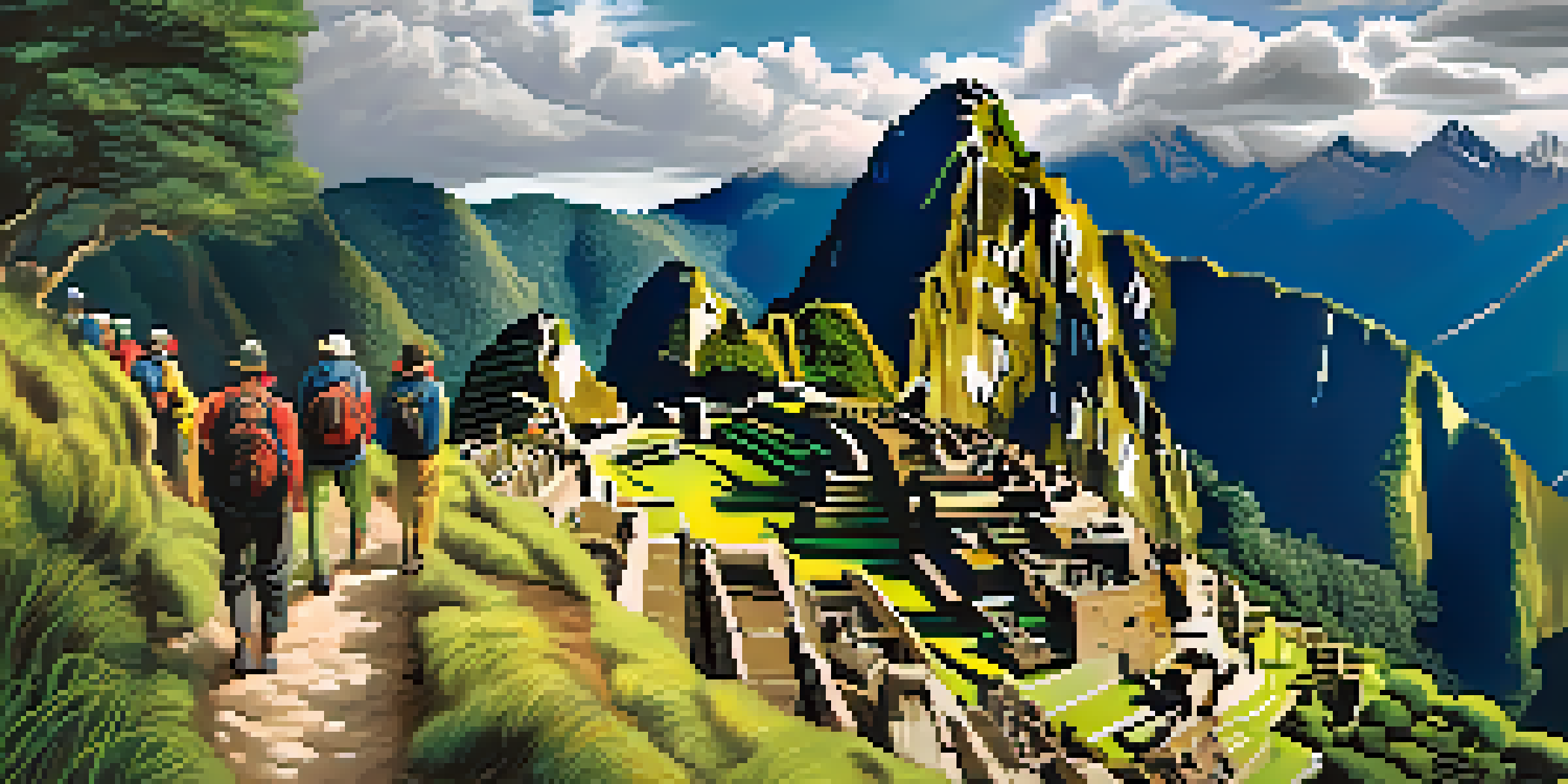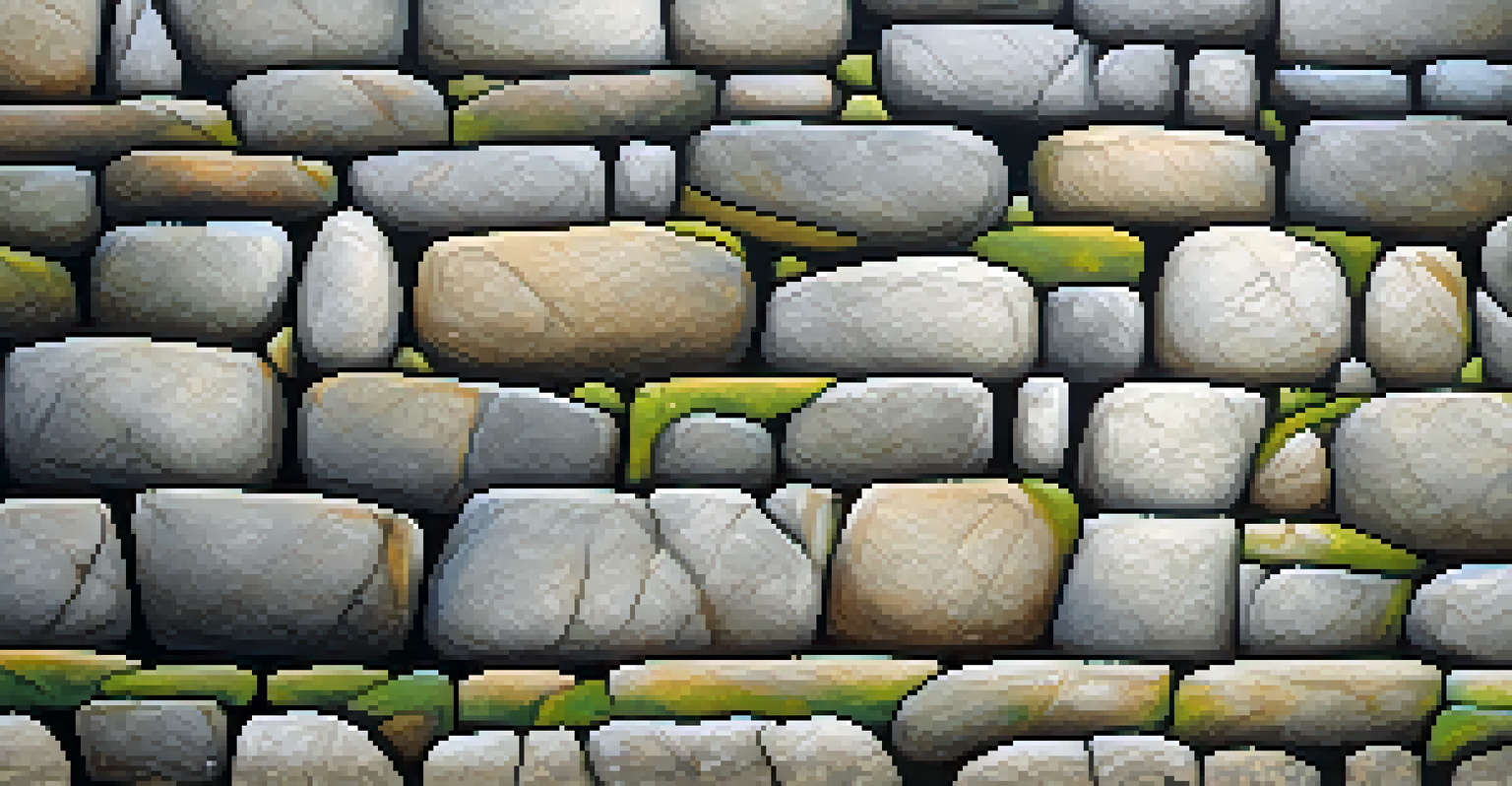The Rise of Machu Picchu: A Tourist Magnet in Peru

The Ancient Inca City: A Brief Overview
Machu Picchu, often referred to as the 'Lost City of the Incas,' is a breathtaking archaeological site located high in the Andes Mountains of Peru. Constructed in the 15th century, this citadel showcases the architectural genius of the Inca civilization. Its strategic location and stunning views make it a marvel that attracts visitors from all corners of the globe.
The ruins of Machu Picchu are the most important archaeological site in South America, and they are a testament to the ingenuity of the Incan civilization.
The site is believed to have been an estate for the Inca emperor Pachacuti, although its exact purpose remains a subject of debate among historians. Surrounded by lush green mountains and steep cliffs, Machu Picchu is not just a historical site but also a testament to the incredible engineering skills of the Incas. Walking through its ruins transports visitors back in time, offering a glimpse into a rich cultural heritage.
In 1911, American historian Hiram Bingham brought Machu Picchu to the world’s attention, sparking interest that has only grown over the decades. Today, it stands as a UNESCO World Heritage Site, celebrated for both its historical significance and its stunning natural beauty. As one of the most recognized symbols of Peru, Machu Picchu continues to draw tourists eager to explore its mysteries.
The Growing Popularity of Machu Picchu
In recent years, Machu Picchu has seen a surge in tourism, becoming one of the most visited attractions in South America. Factors contributing to this rise include increased accessibility, improved infrastructure, and a growing interest in cultural and eco-tourism. Travelers are eager to experience the breathtaking landscapes and rich history that Machu Picchu offers.

Social media plays a significant role in promoting the site, with countless photos and stories shared by visitors showcasing its beauty. Platforms like Instagram have turned Machu Picchu into a bucket-list destination for many, inspiring others to make the journey. This online influence has not only increased the number of visitors but has also highlighted the importance of preserving such a precious site.
Machu Picchu's Cultural Heritage
Machu Picchu stands as a testament to the ingenuity and resilience of the Incan civilization, showcasing their architectural and agricultural achievements.
As tourism increases, so do the challenges associated with it. Balancing the influx of visitors while ensuring the site's preservation is crucial for maintaining Machu Picchu's integrity and charm. Efforts are underway to promote sustainable tourism practices that allow people to enjoy the site while minimizing environmental impact.
Cultural Significance of Machu Picchu
Machu Picchu is not just a tourist attraction; it is a symbol of Incan culture and history. The site is rich with cultural artifacts and architecture that reflect the spiritual and agricultural practices of the Incas. From intricate stonework to terraced farming systems, each element tells a story of a civilization that thrived in harmony with nature.
Machu Picchu is a reminder of the incredible achievements of the Incas, standing as a symbol of human ingenuity and resilience.
The significance of Machu Picchu extends beyond its physical structure; it represents the ingenuity and resilience of the Incan people. The careful planning and construction of the site showcase their deep understanding of astronomy, agriculture, and engineering. Many believe that the site was also a spiritual center, with various temples dedicated to Incan deities.
Today, efforts to educate visitors about the cultural importance of Machu Picchu are increasingly emphasized. Guided tours often include insights into the history and traditions of the Incas, helping tourists appreciate the site on a deeper level. This not only enhances the visitor experience but also fosters a greater respect for the heritage of the region.
Machu Picchu: A Sustainable Tourism Model
As the number of visitors to Machu Picchu continues to rise, sustainability has become a key focus for local authorities and conservationists. The goal is to create a tourism model that protects the integrity of the site while still allowing people to experience its wonder. This involves implementing measures such as visitor limits, guided tours, and conservation projects.
One successful strategy has been the introduction of timed entry tickets, which helps regulate the flow of tourists throughout the day. By staggering visits, the site can reduce overcrowding and minimize wear and tear on the ancient structures. This approach not only enhances the visitor experience but also protects the delicate environment surrounding Machu Picchu.
Sustainable Tourism Challenges
As tourism increases, balancing visitor access with the site's preservation is crucial to maintain Machu Picchu's integrity and charm.
Additionally, local communities are being engaged in tourism efforts, ensuring that they benefit from the economic opportunities that arise. By promoting local culture, crafts, and cuisine, sustainable tourism can create a positive impact on the region while preserving its unique identity. This holistic approach to tourism is crucial for the future of Machu Picchu.
The Trek to Machu Picchu: An Adventure
The journey to Machu Picchu is as iconic as the destination itself, with several trekking options available for adventurous travelers. The Inca Trail is the most famous route, offering a scenic and challenging hike through breathtaking landscapes and ancient ruins. For many, this trek is a rite of passage, culminating in the awe-inspiring view of Machu Picchu at sunrise.
Other trekking alternatives, like the Salkantay Trek and Lares Trek, provide unique experiences that cater to different skill levels and preferences. These trails showcase the diverse ecosystems of the Andes and offer opportunities to connect with local communities along the way. Each trek presents its own set of challenges and rewards, making the journey to Machu Picchu a memorable adventure.
Regardless of the route chosen, the experience of reaching this ancient citadel is unforgettable. Standing at the Sun Gate and witnessing the first rays of sunlight illuminating Machu Picchu is a moment that stays with travelers long after they leave. The trek not only enhances the overall experience but also deepens the connection to the rich history and culture of the region.
Local Community Impact and Involvement
The rise of tourism at Machu Picchu has had a profound impact on local communities, both positive and negative. On one hand, increased tourism has created job opportunities and generated income for residents. Many locals have turned to hospitality, guiding, and artisanal crafts, benefiting from the influx of visitors eager to experience Peruvian culture.
However, the sudden surge in tourism also brings challenges, such as rising living costs and environmental concerns. The local infrastructure can become strained, leading to issues like waste management and water supply. It's essential for both the government and tourism organizations to collaborate with local communities to address these challenges and ensure sustainable development.
Local Communities Benefit from Tourism
The rise in tourism has created job opportunities for local residents, but it also presents challenges that require collaborative solutions for sustainable development.
Community engagement is crucial for the future of Machu Picchu. Initiatives that promote local culture and involve residents in tourism efforts not only empower them but also enhance the visitor experience. By fostering a sense of ownership and pride in their heritage, local communities can play a vital role in preserving the beauty and significance of Machu Picchu for generations to come.
Future Prospects for Machu Picchu
Looking ahead, the future of Machu Picchu as a tourist magnet hinges on maintaining a delicate balance between tourism and conservation. As the world continues to embrace travel, it’s vital to implement sustainable practices that protect this treasure. Ongoing efforts to educate visitors about the site’s significance and promote responsible tourism will be key.
Innovative initiatives, such as the use of technology to enhance visitor experiences while minimizing impact, are being explored. For instance, virtual reality tours can provide insights into the site’s history without the need for physical presence. Such advancements can help alleviate some of the pressures on the site while still allowing people to engage with its beauty.

Ultimately, the legacy of Machu Picchu lies in its ability to inspire awe and appreciation for history and nature. By prioritizing preservation and sustainability, we can ensure that future generations will have the opportunity to explore and cherish this remarkable site. The journey continues, and with the right approach, Machu Picchu will remain a beacon of cultural heritage for years to come.